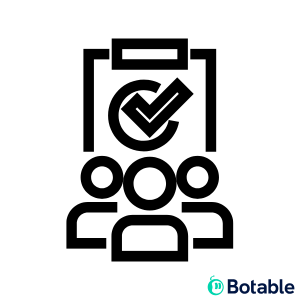Design Validation
Design Validation (21 CFR 820.30(g)) is the final and most important step in the design control process. It confirms that the completed device design works correctly for the people who will actually use it.
In the simplest terms, Design Validation answers the ultimate question: "Did I make the correct product?".
Design Validation (21 CFR 820.30(g))
Design Validation means establishing by objective evidence that device specifications conform with user needs and intended use(s).
Its primary goals are to ensure:
- User Needs are Met: The final device design conforms to defined user needs and intended uses. This means the product is effective and safe when used by the patient or clinician, fulfilling its original purpose.
- Safety and Effectiveness: Validation activities are intended to assure that finished devices will be safe and effective.
Key Requirements for Validation Procedures
Manufacturers must establish and maintain procedures for validating the device design. These procedures require validation to be performed:
- Under Defined Conditions: Testing must be performed under defined operating conditions.
- On Final Products: Validation is performed on initial production units, lots, or batches, or their equivalents. It is typically performed on the final product.
- Real-World Testing: Testing must be performed under actual or simulated use conditions.
Mandatory Components of Validation
Design validation must include several elements to ensure comprehensive safety and usability:
- Risk Analysis: Design validation shall include software validation and risk analysis, where appropriate. Because the FDA states that "where appropriate" means it is appropriate unless documented otherwise, it is almost always appropriate to perform risk analysis. Risk analysis helps ensure that any changes made during the design process do not introduce new hazards.
- Software Validation: If the device incorporates software, validation activities must include software validation.
- Human Factors/Usability Testing: The goal is to improve the design of devices to minimize potential use errors and resulting harm. Design validation often includes human factors/usability validation testing with the final version of the labeling to mitigate the risk of failure to correctly operate the instrument. For example, studies must demonstrate that the intended user can use the device safely.
Design Verification vs. Design Validation in Medical Device Development
In the field of medical device development, distinguishing between design verification and design validation is essential for ensuring compliance with regulations like FDA's Quality System Regulation (21 CFR 820). These processes help confirm that a device not only meets its technical specifications but also fulfills real-world user needs. While they may seem similar, they address different questions and occur at distinct stages. Below, we'll explore each concept, the key question it answers, its primary focus, and when it typically takes place.
Design Verification (820.30(f))
Design verification answers the fundamental question: "I made the product correctly." It focuses on confirming that the design output—such as prototypes, drawings, or software—meets the predefined design input requirements, essentially verifying the specifications. This step occurs earlier in the development process, where the emphasis is on checking against internal design criteria to ensure everything aligns as planned before moving forward.
Design Validation (820.30(g))
In contrast, design validation addresses: "I made the correct product." Its focus is on confirming that the specifications of the device satisfy the actual user needs and intended uses, going beyond internal checks to evaluate real-world applicability. This process follows successful design verification and is performed on initial or final production units, ensuring the device performs as expected in its intended environment.
By understanding and implementing both verification and validation, manufacturers can mitigate risks, achieve regulatory approval more efficiently, and deliver safer, more effective medical devices. For specific applications, always refer to the latest regulatory guidance or consult with quality assurance experts to tailor these processes to your device's requirements.
The results of the design validation must be documented in the Design History File (DHF).
Ready to see what Botable can do for you?
Book your demo now to see how Botable can transform your workplace.
Identify your unique challenges
Flexible pricing options
Easy integrations
Step-by-step implementation plan
Customize Botable for your workflow
Book a demo
.webp)







